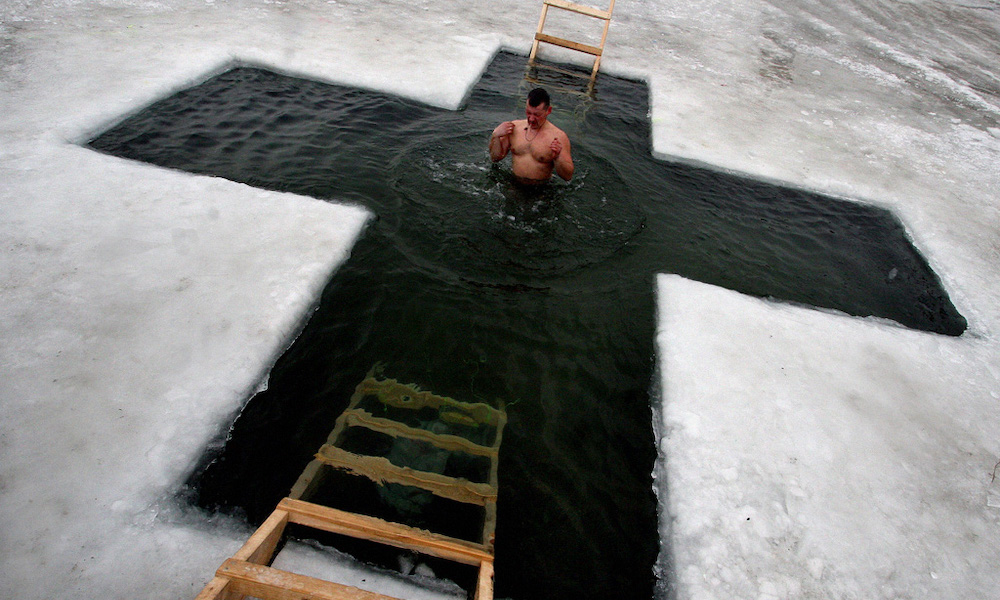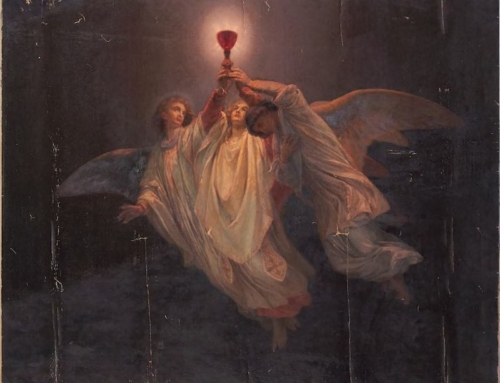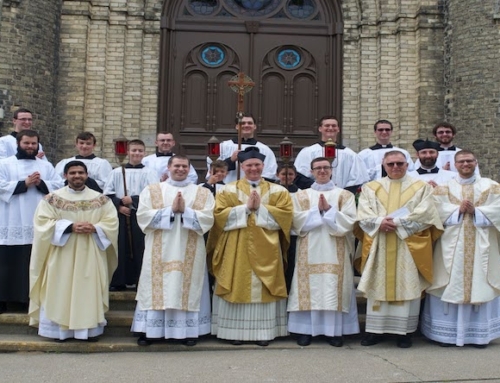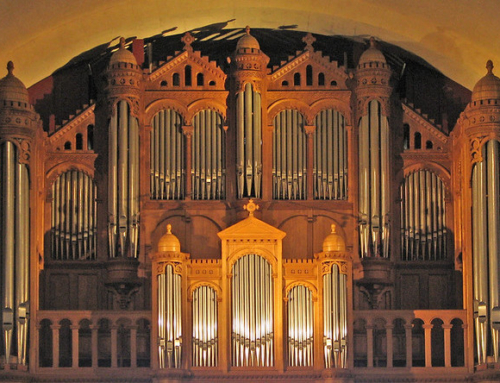Next week, on January 19th, our Eastern brethren will celebrate the feast of Christ’s Epiphany. Epiphany is chiefly about Jesus Christ’s manifestation to the world as God. It commemorates not only the coming of the Magi, but also Christ’s baptism in the Jordan River and his first miracle in Cana. In the West we celebrate Christ’s baptism on the Sunday after Epiphany; however, in the East, his baptism is the main focus on the Epiphany itself. Christ’s baptism is an epiphany because the heavens were opened and the Trinity was revealed and the sacrament of rebirth was initiated. In Russia and other Eastern European countries, Christians celebrate Our Lord’s baptism with an ice cold swim that has become extremely popular. According to the Russian ministry of the interior, 2.4 million people took this Epiphany swim in 2019.
Imagine getting up on a frigid January night in Moscow, and walking through town. Once you get to the bank of the Volga, you see a line of men and women waiting as they proceed to descend a ladder into a fine cut hole in the ice. Each bather descends into the frozen river and immerses himself three times below his head, and then ascends the other side. The hole in the ice is cut in the shape of a cross—each of these bathers is really a worshiper giving praise to God. Why would a believer want to do something as painful or cold as this? It’s not a second baptism, since we “confess one baptism for the forgiveness of sins.” Presumably most of these people received this baptism as children. Likewise, Orthodox Christians like Catholics can avail themselves of the sacrament of confession for sins committed after baptism. So why do millions of people plunge into freezing waters every January?
This action is a sacramental. Much like bowing, genuflecting, or making the sign of the cross, this icy bath is a way for Christians to conform themselves to Christ. Just as all holy water is a reminder of our baptism so too this January swim is a reminder of a certain conformity to Christ. On a purely surface level, by this action the Christian follows Christ into the water.
This sacramental, however, reminds us of baptism in a deeper way as well, because it reminds us of the radical nature of this new birth. Paul asks the Romans, “Are you unaware that when you were baptized into Christ you were baptized into his death?” (Rom 6:3). So too the sacrament of baptism gives the Christian sacramental character and sanctifying grace. This character conforms us to Christ as an adopted son or daughter of God. The icy plunge represents in an extreme way our death to sin and our new life in Christ.
Thus, there is probably something to learn from our Eastern brethren who will swim this January. They are a reminder of Christ’s manifestation to the world, his suffering and resurrection, and our wish to be totally conformed to him. While we may not jump into a frigid Russian river this January, may our desire to be conformed to Christ be manifest in the sacrifices of our daily lives.
✠
Photo by Vitaliy Ankov (RIA Novosti archive, image #550903), CC-BY-SA 3.0







